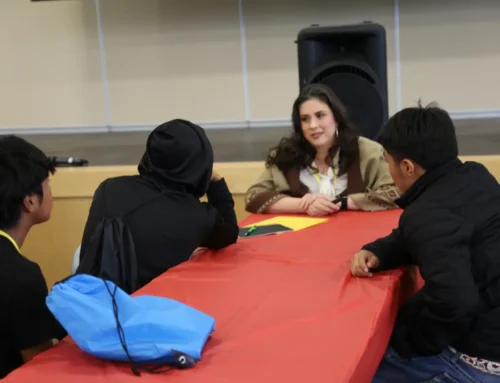 While pondering the direction of this blog post, I realized that Ed Jr., my son, loves to read, but Emma, my daughter, is much happier writing. In fact, Emma’s goal is to be a published author someday. What should Emma be doing as a student to get ready for a career in writing? What are best practices for writers? If Emma loved to read like Ed, would she improve her writing skills?
While pondering the direction of this blog post, I realized that Ed Jr., my son, loves to read, but Emma, my daughter, is much happier writing. In fact, Emma’s goal is to be a published author someday. What should Emma be doing as a student to get ready for a career in writing? What are best practices for writers? If Emma loved to read like Ed, would she improve her writing skills?
According to many new and experienced authors, the key to their success in writing is “reading and writing”. Read all the time. Read a broad range of materials. Read a broad range of authors. Learn to love words. And write. Write all the time. Practice every day. Do not let a day pass without dedicated writing time. In fact, Samuel Johnson once noted, “The greatest part of a writer’s time is spent in reading in order to write; a man will turn over half a library to make a book.”
Looking into the research, there is widespread support for this belief. Rebecca Alber, an instructor at the UCLA Graduate School of Education, said, “Show them don’t tell them”. In other words, helping our students understand good writing by reading the well-written material or “mentor texts” gives them exemplars. Elizabeth Moore, in her popular blog Two Writing Teachers, says letting your students listen to you read the mentor texts, helps them recognize the writing, but “when I’m planning to read aloud a book to students to support their writing, it is never the first time they’ve seen or heard the text.” In order to concentrate on the writing, students need to already know the story, so they can actually hear the words. They need to have done the reading.
Clearly, reading and writing are inextricably entwined. Ralph Fletcher, writing mentor to teachers and students, and author of The Writing Workshop: The Essential Guide, says, “Writing is slippery stuff. How does anyone learn to do it well? I am certain that reading particular novels, poems, and plays provided a catalyst that helped me grow into the writer I am today.”
I had great fun reading the resources below to determine that Emma will be a better writer if she loves reading the way Ed Jr. loves reading. I’m excited to think I might be able to encourage Emma’s reading by introducing her to authors I loved as a child and still love today. And I’m excited to know that in her writing classes, Emma’s teachers are using “mentor texts” and well-written words to motivate her.
Want a reading and writing opportunity for your students?The NWESD in partnership with Skagit Valley College sponsors a Young Authors Conference each March. Visit www.nwesd.org/young_authors for information and a registration form.
Yours in reading and writing,
Ed
Resources:
Alber, Rebecca. “Using Mentor Texts to Motivate and Support Student Writers”, Edutopia, JULY 31, 2014
Ehmann, S. and Kellyann Gayer. I Can Write Like That! : A Guide to Mentor Tests and Craft Studies for Writers’ Workshop, K-6 Newark, DE: International Reading Assoc., 2009, pg. 1-8
Fletcher, Ralph. Mentor Author, Mentor Texts Portsmouth, NH: Heinemann, 2011, pg. 3 – 10
MacArthur, S., Fitzgerald, J. and Graham, S. (eds.) Handbook of Writing Research, Second Edition“Relationships between Reading and Writing” New York, NY: Guilford Press, 2016, Ch. 13
Moore, Elizabeth. “Reading Like a Writer, Step-By-Step: Teaching Writing with Mentor Texts”http://twowritingteachers.org May 3, 2016. Retrieved: Oct 30, 2017
Ng C. and Bartlett B. (eds.) Improving Reading and Reading Engagement in the 21st Century. “Reading and Writing Connections: How Writing Can Build Better Readers (and Vice Versa)”. Singapore: Springer, 2009, pg 333-350



